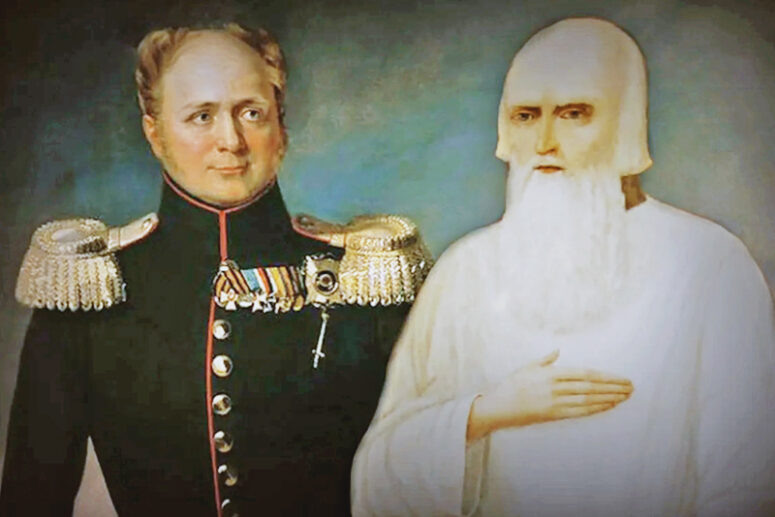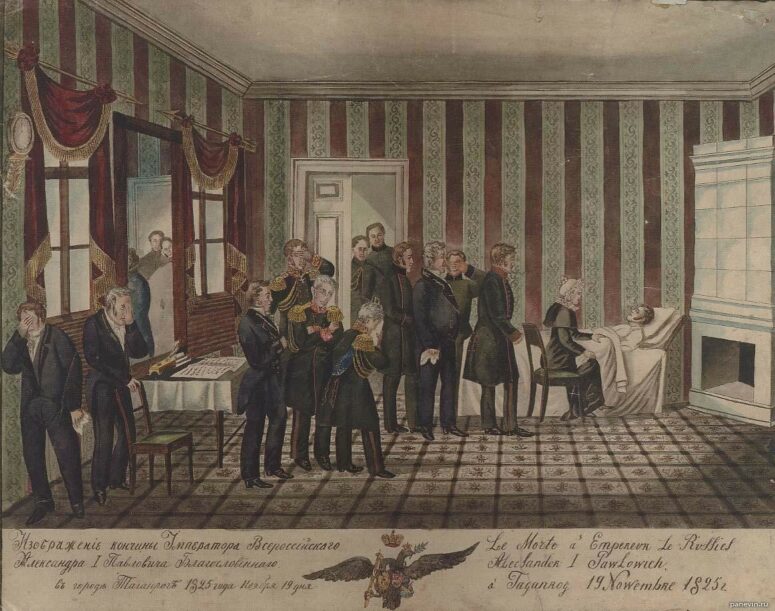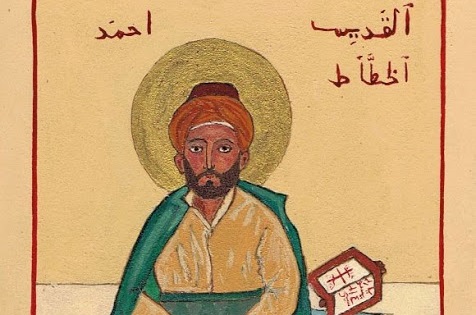
Few men could afford to live their lives as written in these verses of the Gospel: “If you want to be perfect, go, sell your possessions and give to the poor, and you will have treasure in heaven. Then come, follow me.” (Matthew 19:21). Yet it is speculated that the Russian Emperor Alexander I could be among these few. Some ascribe the identity of this Russian monarch to a Russian elder, Saint Fyodor of Tomsk. Although no definitive proof of this legend has been found to date, its proponents have found multiple clues in their favour. Whether a former monarch or not, Elder Fyodor is not venerated for his life before his hermitage, but for his exceptional ascetic exploits and his spiritual closeness to God in the last years of his life.

First sighting
The earliest reliable evidence about the life of Saint Fyodor Kuzmich indicates that he had settled in Siberia. In autumn 1836, several residents stopped a stranger riding in a horse-drawn carriage off the town of Krasnoufimsk in Perm Governorship. He was clean; his refined manners suggested that he was of noble descent, yet he was wearing coarse peasant clothes. He did not answer a single question directly, so the residents who stopped him took him to the city courthouse. They found no identity document on his person. During questioning, he identified himself as Fyodor Kuzmin, 70 years of age. He told the interrogator that he was Orthodox, illiterate, never married and could not remember his descent. He also said that he was living by asking good people for food and that he was on his way to Siberia, and was planning to settle there. The interrogators were sceptical and advised the stranger to reveal his real name and rank, but he insisted that he was a vagrant. Under the law of the time, vagrancy was punishable by lashes and exile. The court sentenced Fyodor to twenty lashes and exile to Siberia. The elder was happy with the sentence. In March 1837 he reached Tomsk Governorship and settled in Zertsaly village, where he spent the next several years. Seeking silence and hermitage, he moved from one village to another frequently. He spent the last six years of his life in Tomsk, with the local merchant Semyon Khromov, a great admirer of Elder Fyodor.
A likeness to the Russian Tsar
Eventually, the elder, who went by as Fyodor Kuzmich, told a visitor that he was born in 1776 or 1777. He also confided in the Bishop Athanasios of Irkutsk that he had had the blessing for his ascetic exploit from Metropolitan Philaret of Moscow. In all other respects, the elder was carefully hiding the information about his ancestry or estate. Yet he talked frequently about the life of the royal court in Saint Petersburg and the war with Napoleon. From the amount of detail, one might think that he had been rather a participant than a mere witness to the events. The people who knew the Tsar in person pointed to his likeness to the Russian monarch in appearance. Consequently, many people during his lifetime were convinced that elder Fyodor was noone other than Emperor Alexander I (1777 – 1825). They believed that he had secretly stepped off his throne and staged his death.

The death of Alexander I in Taganrog was certainly unexpected and shrouded in secrecy. For a long time, his body was not taken to Saint Petersburg, and he was buried in a closed casket, presumably because the body had begun to decompose.

Lifestyle and relationships
In his search for closeness to God, Saint Fyodor was depriving himself of all comforts. He chose to live in small rooms. Initially, he used a bare wooden plank for his bed. Later, he began to cover it with a mattress of branches and twigs. “It was getting too hard on my body,” explained the saint. His clothing was as bare-bones and simple as his sell. Yet the elder was very fit for his age and helped his hosts all the time with physical work. He dedicated all his free time to prayer, but he was praying in private when nobody saw. Thick blisters from kneeling were found on his knees after his death. Saint Fyodor also observed strict fasts, but again, without telling anyone. All the foods and treats that his visitors brought he gave away to the poor vagrants and exiles. Yet, when one of her visitors brought him a fish pie and doubted that he was going to eat it, he objected: “Why not? I am not the sort of ascetic that you imagine.” When travelling to nearby villages and Tomsk, he always went to church. He chose a place on the right near the door.
Some people who suspected that the saint’s lifestyle had once been very different, asked him to explain what made him trade his past life for his present one, full of adversity and hardship. Typically, the elder would reply: “What makes you think that my present position is necessarily worse than my last one? I am free, independent, and most importantly, I am at peace. <…> If I ever returned to my past, and took custody of all the finite worldly riches, for which I now have absolutely no need, I would be a most unhappy man. The more we pamper and gratify our body, the weaker we become in the spirit. Any luxury in which we indulge ourselves loosens up the body and lowers the defences of the soul.”

The love of God to which the righteous elder aspired in his heart was visible in his relationships with people. With some rare exceptions, he never turned away a visitor, and he always advised them free of charge. He treated a visitor of any social status with consistent respect. He never let them kiss him on his hand, or ask him for a blessing as if he were a priest.
The gifts of God’s grace
For the benefit of the people, the Lord endowed Saint Fyodor with the gifts of far-sightedness and healing. Healing people’s physical infirmities, the elder often made known to them their spiritual transgressions that may have led to their ailments. Here, we have space to mention only a few examples.
When a merchant entered the elder’s room, the elder asked him, unexpectedly: Why did you pick up the small coins? They were not yours. The merchant remembered that some hours earlier he had picked up from the road a few small coins that someone had dropped.
When the elder was staying in Boyarskoye Village, the local priest noticed that he was not coming to him for his confession. He decided that he was a schismatic and even denounced him in public for being a godless man. Shortly afterwards he went down with a grave illness, and doctors could do nothing to help him. On the advice of the laity, the priest sent for Saint Fyodor. The instructed him strictly not to attribute bad motives to good people and not to judge anyone in front of others. Soon, the priest got better and became one of the saint’s disciples.
Semyon Khromov – who was giving shelter to the elder in Tomsk – was healed through his prayers from his eye problem. He never needed any eyeglasses for the rest of his life.
Departure and veneration
Towards the end of his earthly life, the Lord allowed the elder a terminal illness. He was getting worse by the day.
Yet even in the face of death, the elder refused to reveal his real name. Merchant Khromov gave this account of his visit to the elder’s room on the eve of his departure. He came, said the prayer and asked: “There is rumour that you are nobody else than Alexander, the Blessed Tsar. Is this true?” Hearing these words, the elder signed himself with the cross and said: “Great and marvellous are your deeds, Lord God Almighty. No secret would not come in the open”
The next day, the saint asked him: – “Even though you know who I am, do not glorify me too much, have me buried in a simple way.”

After partaking of the Holy Sacraments a day before his death, the elder departed in peace on 2 February 1864. When his soul was ascending to the Lord, merchant Khromov’s neighbours saw a large flame burst out thrice from the windows of the merchant’s house. They called the firefighters, but when they came, there was no fire.
After the elder’s death, his grave in Tomsk became a place of pilgrimage. Multiple cases of healing have been reported through the prayers of the elder. People who come in faith and pray vehemently have their petitions granted. Today, a chapel is standing above the saint’s grave, and his relics, uncovered on 5 July 1995 have been laid to rest in a church of the Monastery of the Holy Theotokos and Saint Alexius.






I have read other stories of royals visiting him, and that they knew he was the Tsar.